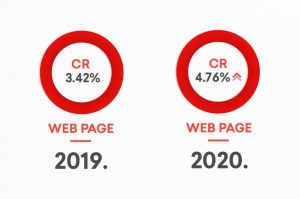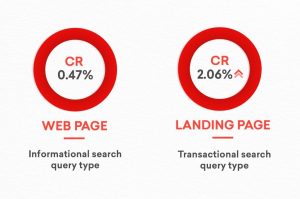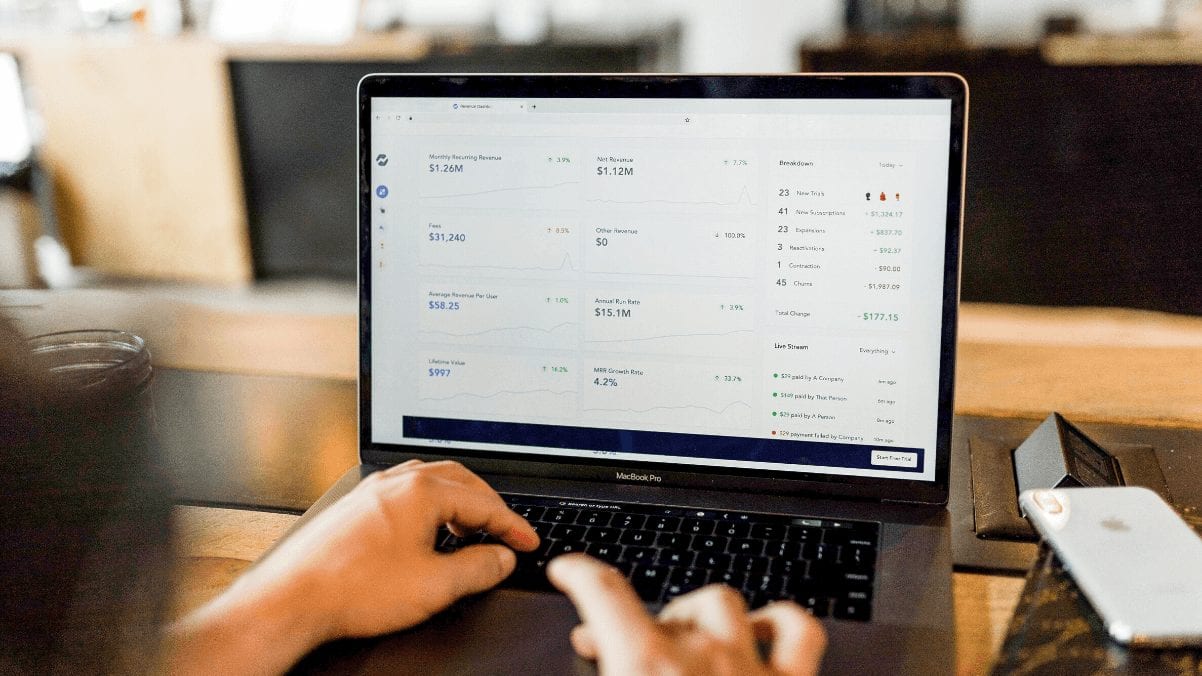During times of economic growth, marketing budgets tend to be quite large and constantly increasing. Unfortunately, we see the other side of the coin during times of recession, when companies often decide to cut marketing budgets, headcount and long-term investments. However, even while cutting marketing costs, the most important criteria one should consider are: cost efficiency, measurability and return on investment (ROI).
These are the exact reasons why the segment of conversion rate optimization (CRO) becomes even more relevant during a crisis.
What exactly is conversion rate optimization?
Conversion rate optimization is the process of increasing the percentage of visitors on a website or app who take a desired action, or more precisely, visitors that convert into customers. Essentially, it is a case-by-case process that depends on the type of project and industry in question, but it is always based on analytics data reports.
Here are some examples where CRO can be of great value:
- healthcare – increasing the number of customers signing up for the appointment
- tourism – increasing the number of bookings
- web shop – increasing the number of buyers and/or the size of their order
- startup – increasing the number of leads
- winemakers – increasing the number of wine buyers
- telecom companies – increasing the number of data plans sold
The most important part of CRO is research — looking into every single detail in the analytics, so you can find out exactly what the problem is, what prevents conversions from happening, and what can be done to intervene and minimize attrition.
If you’re starting with a project that doesn’t have a pre-established measuring strategy, the first step is to find that data in order to have a foundation for the rest of your research. Besides knowing user behavior data, it’s also important to know the basics of UX. This knowledge enables you to run your own tests on the website or app and find out more about the possible problems and difficulties that customers encounter, eventually adjusting the process in question with more intuitive design and text so the conversion path gets simpler and easier.
The key thing is to act as if your customers don’t have any prior knowledge or experience with websites, therefore every step and decision should be made as easy as possible. After gathering data, the next activity is coming up with a strategy on how to optimize the conversion rate. It should be noted that you always need to measure every single thing you want to test. The process itself doesn’t count if you don’t measure the effect of the changes you’ve made, because they are the insight that you learn from and base your next steps on. Also, keep in mind that optimization is a never-ending process that needs to be implemented during the whole “lifespan” of your web project.
Why is conversion rate optimization important during times of crisis?
CRO is definitely a service that can have a high ROI. For example, let’s see stats for a health clinic that has:
- 100.000 website visitors monthly
- 250 of them sign up for a procedure that costs 400 euros
The conversion rate is 0,25%, and the monthly revenue is 100.000 euros. By using CRO, it’s possible to increase the conversion rate from 0,25% to, let’s say, 0,5%. In that case, the website would achieve revenue of 200.000 euros with the same amount of traffic, which means an extra 100.000 euros per month.
This is a segment that’s relevant in all economic cycles, but becomes even more cost-efficient during the recession. If we have a client who:
- invests a large amount of money into advertising (e.g. 20.000 euros per month)
- doesn’t invest into CRO and has a steady conversion rate
- decides to invest into raising their conversing rate. Let’s say it’s the example above and the increase is from 0,25% to 0,5%
In that case, the client (the clinic) has two options:
- cutting their advertising budget for 50% and saving up 10.000 euros per month
- keeping the same advertising expense, but with a 100% increase in revenue
Both cutting expenses and revenue increase are excellent tools in battling recession.
Conversion rate optimization in creating a new website or web shop
The segment of conversion rate optimization is also crucial while creating a new digital asset. Whether it’s a regular website or a webshop, the goal isn’t making a pretty and functional web, but making it perform well. Amazon.com, the biggest global webshop, is a great example of this. It may not look that nice at first, but it’s perfectly optimized to achieve higher conversion rates.
Degordian developed a process in which a CRO expert is always included in performance-oriented web (assets) projects and in all of the critical segments of the web, in order to assure that all of the aspects are done adequately. This is an essential part of the web development with which we build the foundation of a future web shop or website. This kind of optimization affects every type of traffic the web achieves in the future, whether it will be organic, direct or acquired through campaigns.
If you don’t pay immediate attention while building a digital asset, you might max out after a very short period of time without ever reaching the maximum of its potential. Building a website or web shop is similar to building a house — for example, if you’re building a one-story house and you wish to add two extra stories later on, it’s quite probable that your foundation won’t be made for additional upgrades. That means that any later maximizing efforts will require that you demolish the whole house in order to start from the foundation again.
Can a website be created by one company, but with an outside conversion rate optimization specialist?
Of course. We had multiple projects where someone else developed the website, but Degordian handled the conversion rate optimization process.
Can conversion rate optimization be done on an existing web?
Absolutely. We even have more of those types of projects at Degordian than those that start from scratch. However, in that case, it’s really important that the team handling the web maintenance is available. The process goes like this: the CRO team analyses the web on a regular basis, then gives suggestions on how to improve based on the collected data. Some of those suggestions can be implemented by the CRO team through front-end development, but some suggestions might require the involvement of the back-end team.
For example, we did additional CRO for a client with the goal of increasing the sale of one product. By changing communication and rearranging the existing element of the product website, we managed to increase the conversion rate for 28%. That case refers to the entire traffic of the website, but conversion optimization can also be done for website user segmentation.

In another project, we made a special landing page where all communication was adjusted specifically for one segment of users who arrive through paid campaigns. The idea was to separate the informational search query type of visitors from the transactional type and offer them a more suitable form of content and communication. The conversion rate on the new landing page increased by 300%.

These are just some of the possibilities and advantages of conversion rate optimization, but if you have any questions or need some advice, contact us via form or email— we’ll be happy to help!

